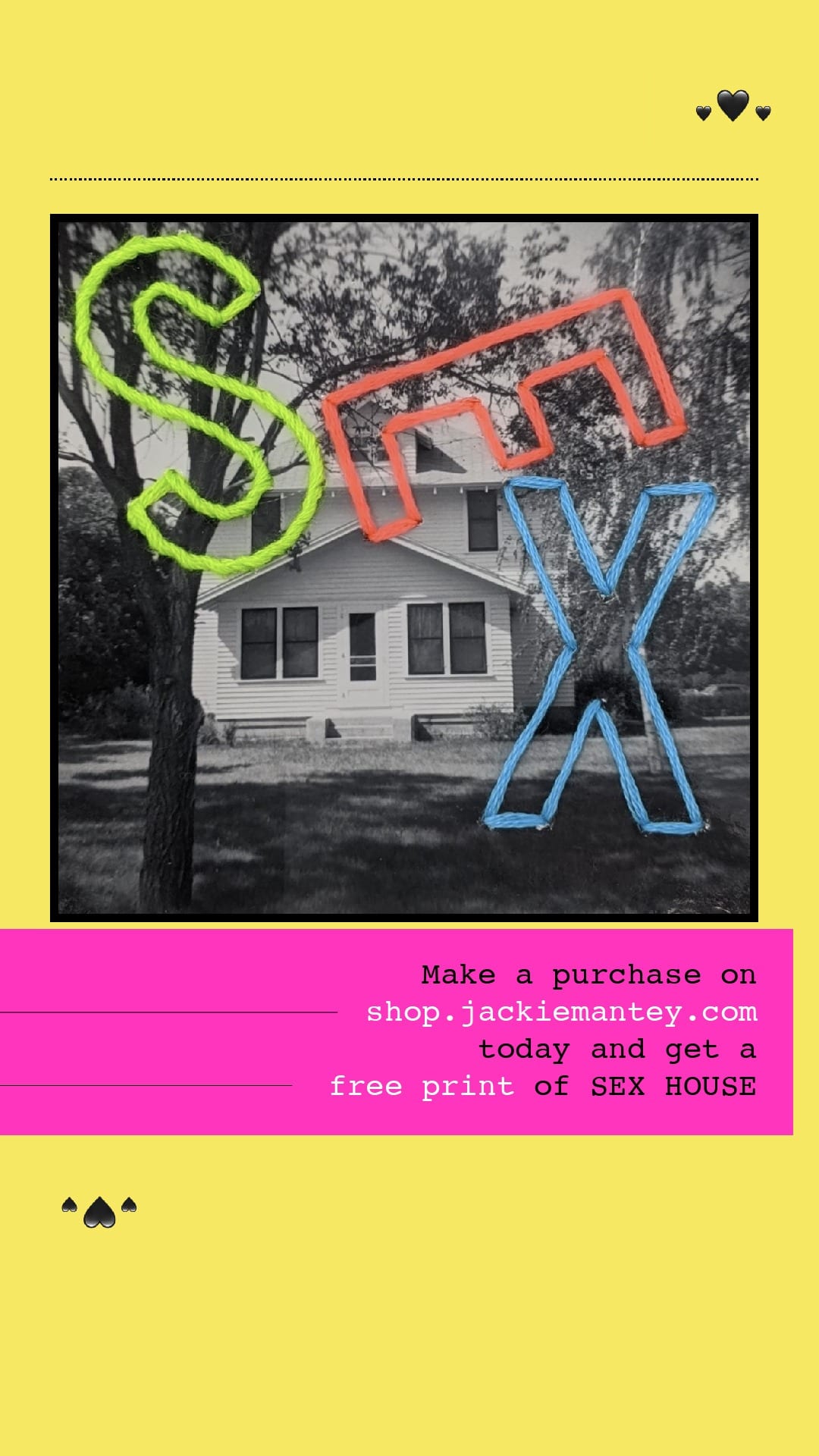
P.S. Deal’s good February 14, 2021, while supplies last. 🙂
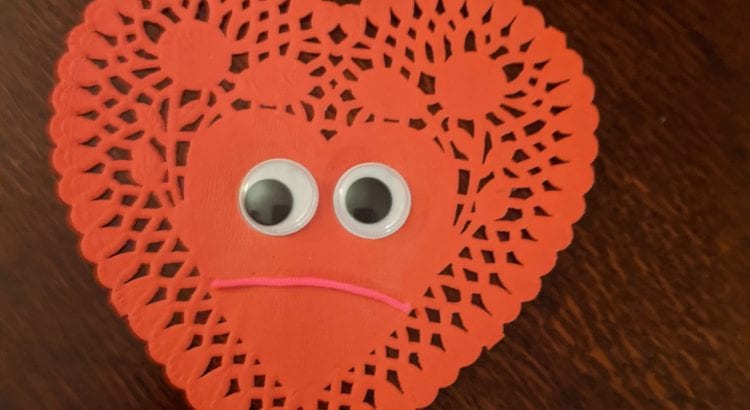

I spent most of January in an escapist headspace, burrowing down into several subjects, my fascination with which have taken me by surprise.
1) Richard Yates. I read Revolutionary Road in 2008 when the movie came out because my tween brain imprinted on Titanic-era Kate and Leo in 1997 and I’m pretty much subconsciously committed to following them in a space ship to Mars if they were featured as star-crossed lovers in its alien-infested bowels.
But. I never watched Revolutionary Road the movie for some reason? Probably because I read the book first and it was devastating; too devastating to see on screen right afterward. Fast forward almost 13 years later, the movie’s on HBO Max and with all this quarantine time on my hands, I gave it a crinoline-skirted whirl and… god damn. Devastating, yes indeed, but I was surprised at how differently I thought of the characters and the plot with some years as an adult under my belt. (APRIL, I KNOW, IT SUCKS YOU CAN’T SELF ACTUALIZE BECAUSE OF THINGS OUTSIDE YOUR CONTROL, BUT YOU LUCKY BITCH, JUST ENJOY YOUR HOUSE AND WORK-FREE LIFE OMFG.)
Perhaps my bleak outlook is quarantine related. Or could it be because the movie is different from the book? I bought a three-book tome of Richard Yates’ work and decided to find out. This turned out to be the biggest January 2021 gift of all! What a cynical, destructive, brutal, little worm Revolutionary Road is. 😍 Like the girl-smirking-at-house-fire meme in book form. I love it, and I find such unrepentant catharsis in how slowly but surely Yates dismantles each character with the kind of rage-eyed honesty no one wants to be in front of but, if you see the people the way he does, feels so rewarding and relieving to watch.
And how he does it is startling. Funny almost. You can’t even see it coming. Example: The following savory paragraph about how the children can sleep comfortably now that their parents have stopped fighting (because mom and dad are high on their unrealistic self-deluded fantasy that will eventually kill someone but we’ll get there soon enough!).
“They could lie drowsing now under the sound of kindly voices in the living room, a sound whose intricately rhythmic rise and fall would slowly turn into the shape of their dreams. And if they came awake later to turn over and reach with their toes for new cool places in the sheets, they knew the sound would still be there—one voice very deep and the other soft and pretty, talking and talking, as substantial and soothing as a blue range of mountains seen from far away.”
Then, next paragraph, like a slap in the face from a surly sugar plum fairy:
“This whole country’s rotten with sentimentality,” Frank said one night…
HA!
2) Dennis Rodman. I know, girl! I don’t know! Whyyy?
This minor obsession was inspired by another thing we finally watched: The Last Dance docu-series, which chronicles the 1990s Chicago Bulls as they went for their sixth and final title. At first I was really grooving on Scottie Pippen, learning about his playing style, often relegated to the second paragraph (rightfully so) behind Michael Jordan (GOAT). Then I met Dennis “The Worm” Rodman. Like, basketball Dennis Rodman. I’m so compelled by him! I’m trying to figure out why? I love the way he played basketball, I know that much. Gutter ball go-getter, beast hunter of the rankest of rebounds, trash-talking trash man king of the trash can people…
3) Art as self-authorization. That both of the angry, broken-hearted people listed above struggled with addiction issues all their lives, is the only thing not surprising to me.
I’m interested in people who have channeled extraordinary pain into something else and then turned that “something else” into a brand new something else. Something only they could do or make or be. And if it’s got a little dash of rebellious, self-supporting stank on it, even better. Dennis Rodman became his own performance art piece on the basketball court after accepting that the love/loyalty he thought existed in the world did not, in fact, exist; turning into Dennis Rodman as we now know and (I) love him was the alternative to suicide. For Yates, writing about loneliness, hopelessness, and self-dishonesty the way he did throbs with recognition; this is someone who lived most of their life feeling like a balloon within a balloon, disconnected from others and bumbling about in the void.
Maybe what’s appealing to me about Yates and Rodman right now relates to the third thing I thought about a lot this past month: the idea that being an artist is simply a matter of self-authorization—authorizing yourself to see what you see and express it however you see fit, then move on. I dig that. Feel inspired by it. Even when it comes from deeply flawed sources. Especially when it comes from deeply flawed sources (who have tried and failed to redeem themselves over and over). For those artists I am “rotten with sentimentality.”
Related: Below are some videos I made for my gallery’s Instagram stories this month. I ~authorized~ myself to learn how to animate my work and post it even if I don’t think it’s perfect yet. Can’t wait to see what February brings. Stay healthy, friends.
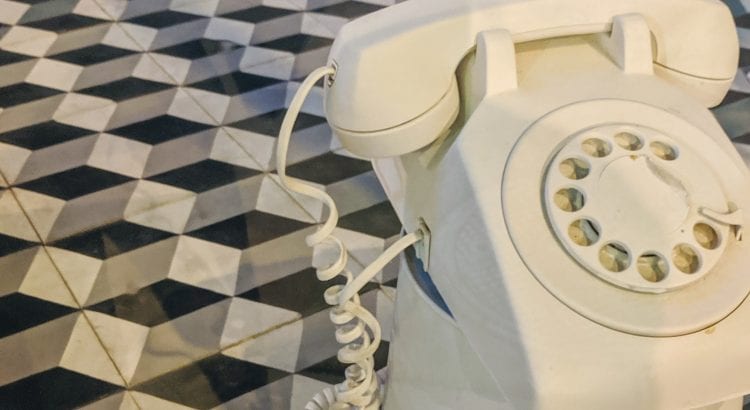
Yes, 2020 pulled up the floorboards of our contemporary societies and shoved our noses in the rot. We’re all glad the year is done, while also recognizing that a change of the Gregorian guard means pretty much nothing except a mindset shift. I got you. Same floorboard-free boat, baby.
So, armed with a fragile optimism and a new year’s-inspired reaffirmation that the only actions I can control are my own 🙃, I’m sharing six apps I started using in the past 12 months that have helped me feel not so gross about everything. And you can too!
This app offers audio versions of magazine articles from a range of national and international publications. I like it because I don’t have to buy a million magazines or subscriptions (which I used to purchase in a flurry and follow-up only with a sweaty regret of the space they eventually take up on my bedside table). And Audm saves me time. I can listen to the latest issue of The Atlantic, for example, while I wash my face masks or clean my zombie-repellent flare gun.
Audm is one of two apps on this list that isn’t free (see also: Sun Basket). But at only $8.99 a month, it’s worth the time it saves me, the depth of knowledge it offers through the articles, and the variety of publication sources—not to mention their archives—to choose from.
Rarely does one download a free app and, soon after trying it, find one’s self exclaiming, “HOW IS THIS FREE?” But it’s 2021, anything is possible, and Pumatrac blew my cynical lil millennial mind. This ~free~ training app is from Puma, so there are ads for the brand’s clothes and workout items, but only on the homepage, and the ads are shockingly unobtrusive; way less distracting or overwhelming than most banner ads or YouTube spots. (Trying to read an article on a newspaper’s website at this point is like trying to uncover a dusty old article from the bottom of a stuffed time capsule.)
The app has video workouts in a variety of themes, like HIIT, pilates, running, and ballet. You pick a workout, download it to your phone, and then go through the circuit with your “trainer” in tow describing the technique and doing the workout with you. It’s as close to an in-person class as I’m going to get right now. My other favorite aspects: It tracks your runs, connects to your Spotify so you can listen to your own workout playlists in the background, and includes a daily calendar feature so you can plan your workouts for the week in advance and, hence the name, track what you’ve done in the past. The calendar automatically records your workouts to each date after you’re done.
I signed up for Sun Basket, a subscription meal kit delivery service, mere days before the pandemic started. It’s proven essential during our continued shelter-in-place predicament. The food is nice and fresh, and the app where you select your meals for each week is easy to manage. Sun Basket is based in San Francisco so, as you might expect, it has the sustainability thing down; the food is responsibly sourced and the packaging shows up with recycling and composting instructions.
I also like that I can order more than just meals for the week. The app has a la carte options for snacks, pre-wrapped breakfasts, yogurt, dips, juices, soups, salad kits, cuts of meat, and more. In a time when long, luxurious grocery shops are a thing of the past (oh, to spend a day dillydallying in the magazine or pasta aisles!), this app has been a game changer for my desire to eat healthier and more thoughtfully.
My brother, who is a gentleman and scholar and a librarian, recommended Libby last spring after I complained about OverDrive, the app I was using to download and listen to library audiobooks. He was, as he often is, right. I love Libby (which is by OverDrive). Superior to any other audiobook-related app I’ve used, Libby’s books download fast, the audio is smooth, and the download and returns (and remove-from-phone!) processes work efficiently.
I also like that Libby directly connects to my Chicago Public Library branch, which means when I log on to the app, I’m visiting my branch’s homepage. It’s become my one-stop app to place holds on physical books, as well as peruse, request, and listen to audiobooks. I like that Libby tracks my progress as I listen; lets me set my preferences for item searches, like format and availability; and has an intuitive UX that makes me excited to find my next read—err, listen.
I love learning new project management tools. I’ll admit it. Asana, a familiar program to me thanks to several freelance clients who use it, is far and away my favorite. Asana is just so easy to use and manage. The flying rainbow narwhals that occasionally shoot across my screen when I check off a task don’t hurt either.
The user friendly simplicity of Asana is exactly what I need for my individual *stuff*. When I started building shop.jackiemantey.com last April, I wanted a place to dump all the tasks I was racking up—a list that kept getting bigger by the hour as I moved through the process and realized how much work it would be. I tried Asana for this purpose, and it delivered.
With the free version, I’ve created several channels for various projects, separating them by art, writing, and personal goals; then I divided those up by project; then projects by tasks; tasks by dates; and so on. The board view is better for brainstorming than a Google doc, and the calendar view is more ideal than putting tasks on my personal cal. I also like that I have a place to dump related links I find or ideas I have that correspond to a particular project, versus putting them in a notes app or emailing them to myself to place later.
This meditation app is free and lets you choose from numerous guided recordings based on meditation type (i.e., sleep, yoga, singing bowls, cello music, mindfulness); intention (i.e., feel grateful, don’t freak out, really don’t freak out, calm the f*ck down); and, most valuably, timeframe (i.e., 5 minutes, 30 minutes, an immortal’s nirvana-ish eternity). With Insight Timer, you (I) can easily find a five-minute “calm the f*ck down” meditation, for example, to help you (me) out between Zoom calls. Or zombie attacks. Or whatever embarrassing, disheartening news is next. 🙃
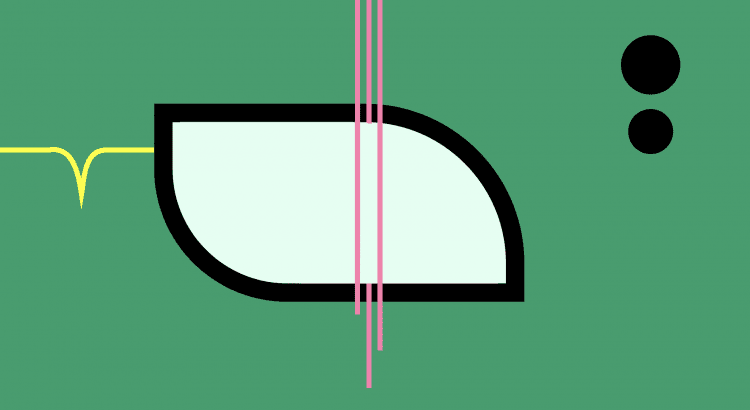
The day after Christmas 2019, I jumped into the Adobe deep end and purchased a year’s-long subscription to Illustrator. I was eager to learn the program, though I can’t remember why? Less expensive than buying canvas and paint, maybe?
Regardless, it turned out to be the best investment of 2019 (and we bought a French press that year!). Making an artwork every morning proved to be an anchor of consistency in a chaotic 2020, a way to visually track my growth in a moment when time started to feel like an unreal flat circle.
And you know what they say: When life gives you time that feels like an unreal flat circle, turn those flat circles into abstract illustrations. Or something.
In other words, I’ll be back at it in 2021. Cheers, friends. I hope you have the happiest, healthiest new year!
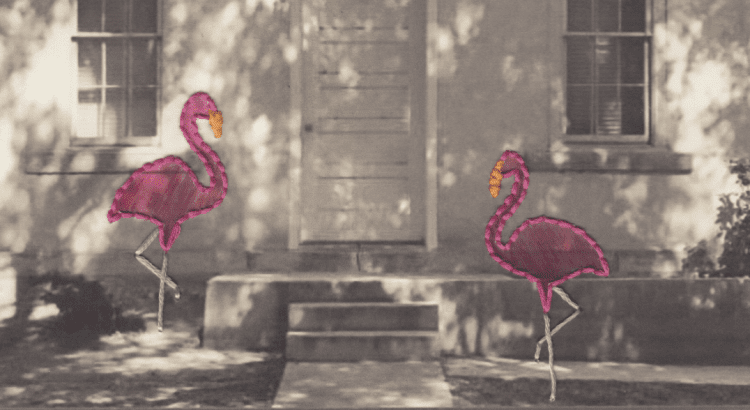
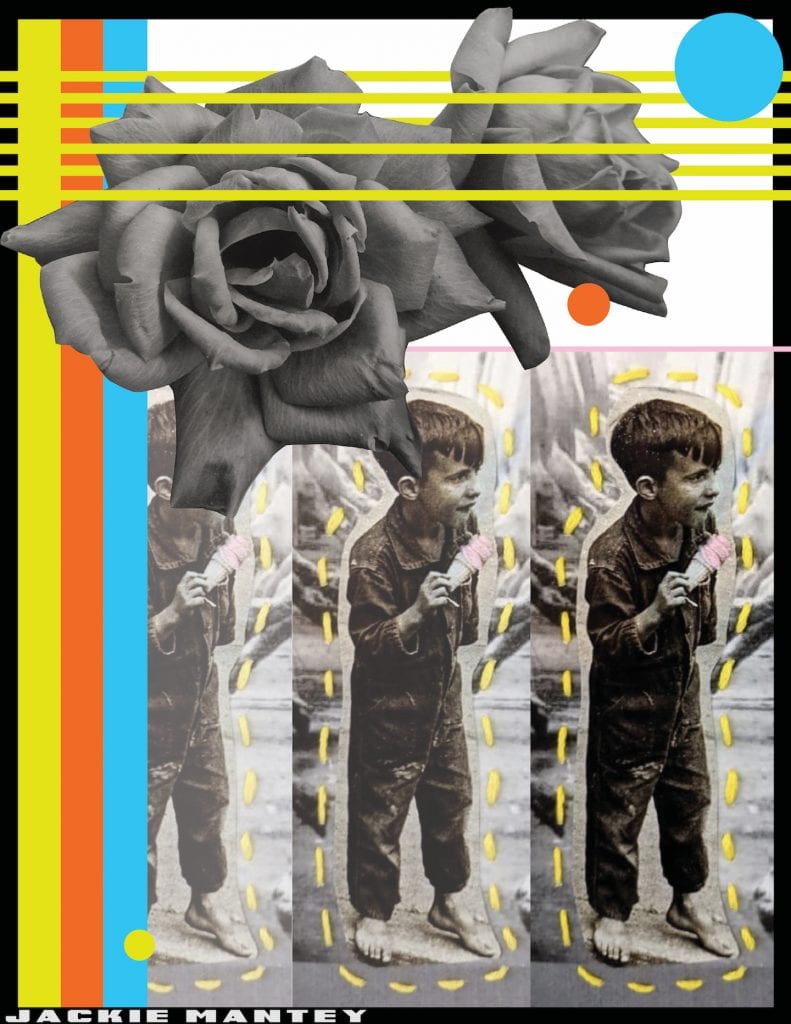
Get a free limited-edition tote bag when you spend $100 or more at shop.JackieMantey.com Thanksgiving through Cyber Monday (November 26-30).
The special tote bag features a heat-pressed print of my photography, embroidery, and illustration collaged into one awesome sack design appropriate for any and all sack-related things.
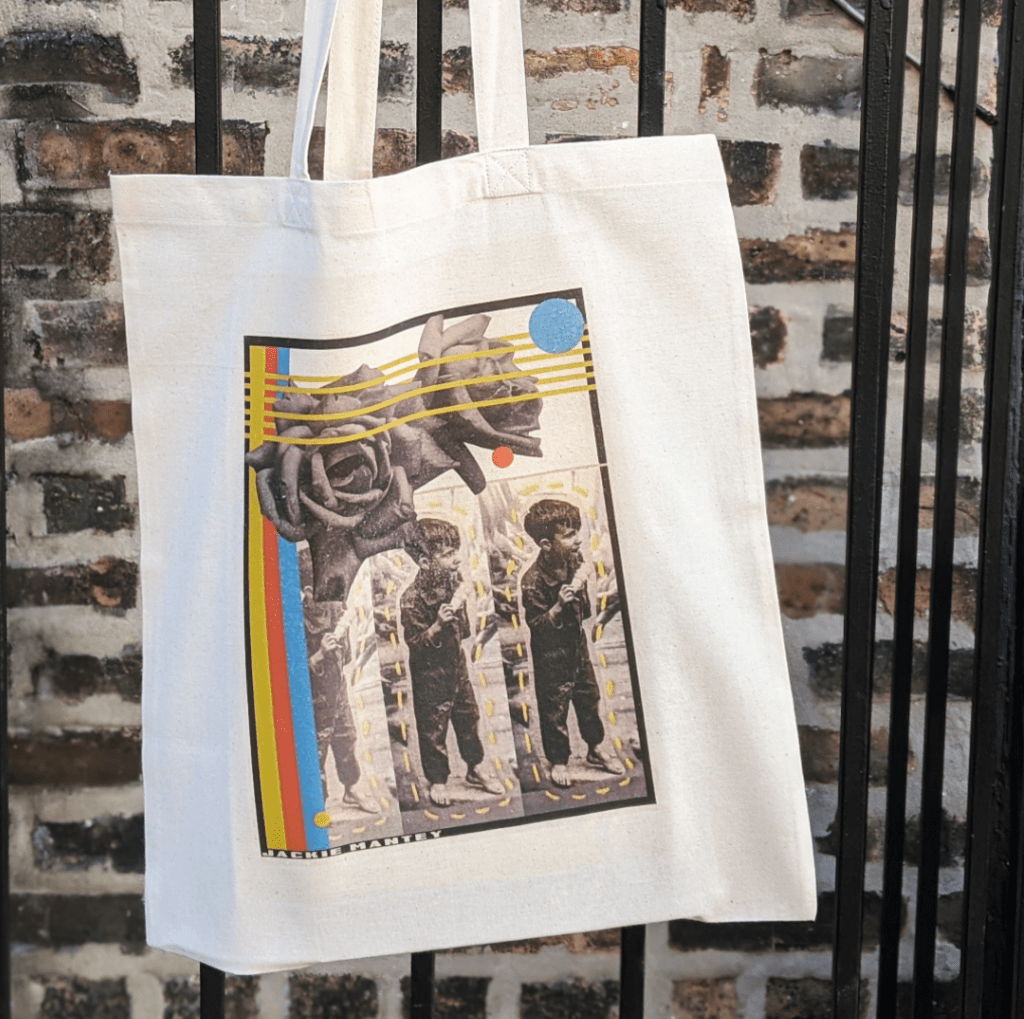
The boy slurppin’ on some soft serve while barefoot on a sidewalk is one of my favorite moments from my 2018 gallery show at Slate Arts. It was fun to bring him back out to play again, this time in Adobe Illustrator.🍦
Like always, tax is included in the shop list price, and shipping is free!
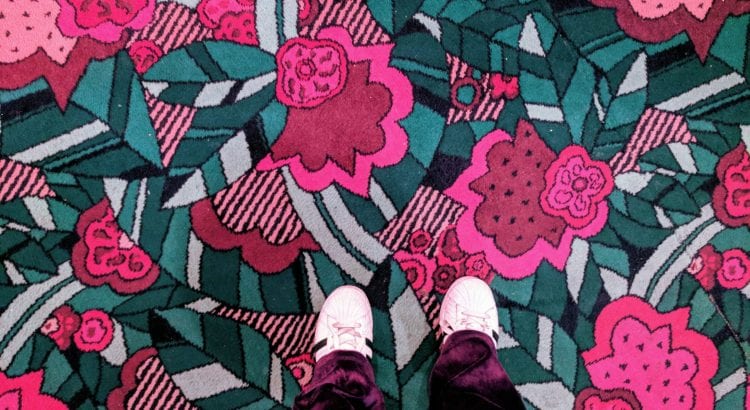
Why pink? I’ve always loved this color.

I’m drawn to every version of it. Bubblegum. Neon. Fuchsia. Pepto Bismol. Patent leather (my favorite).
My senior year of high school my mom made me a hot pink crochet blanket as a graduation gift. I loved it. For a while. Then I stored it away in the top of my closet for about a decade. Why? Pink feels authentic to me, but I became embarrassed by my love of the color.
Pink seemed too conventional, too basic, too one-dimensional. That was how I perceived others perceived it. It was as if pink had already been claimed by women who weren’t like me, representing identities of the shopaholic bimbo that I wanted to distance myself from. I felt like pink had been claimed by a consumerist or sexualized society that made me feel less than valuable.
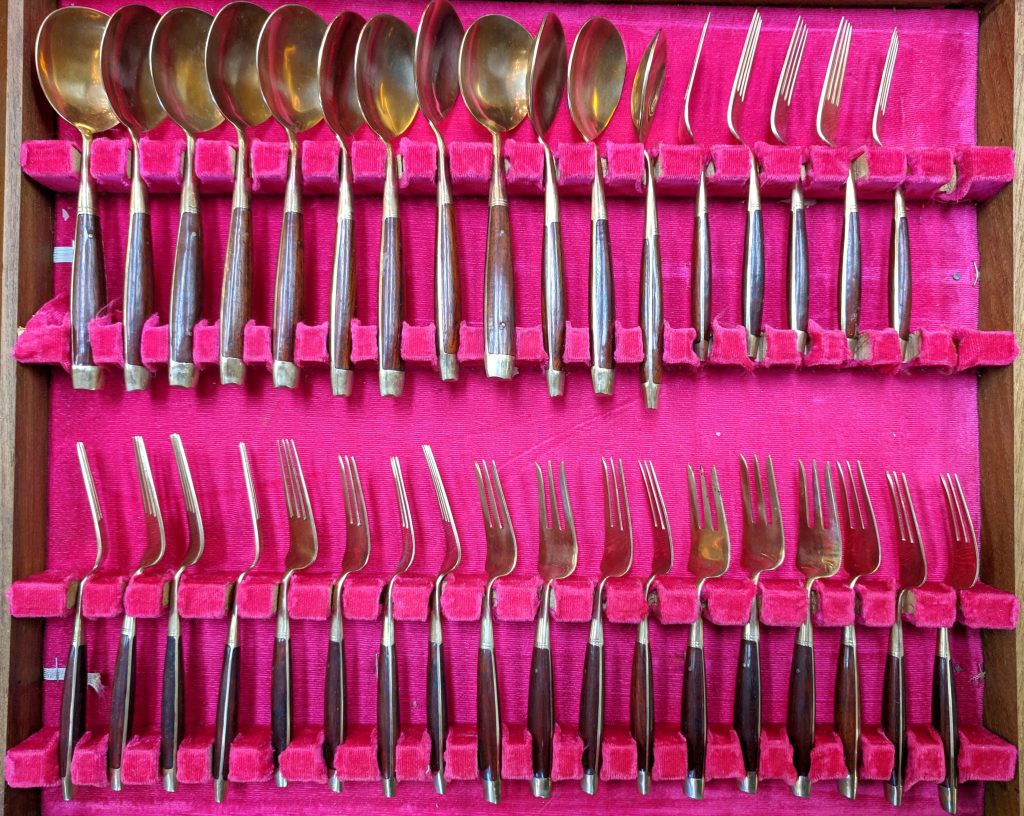
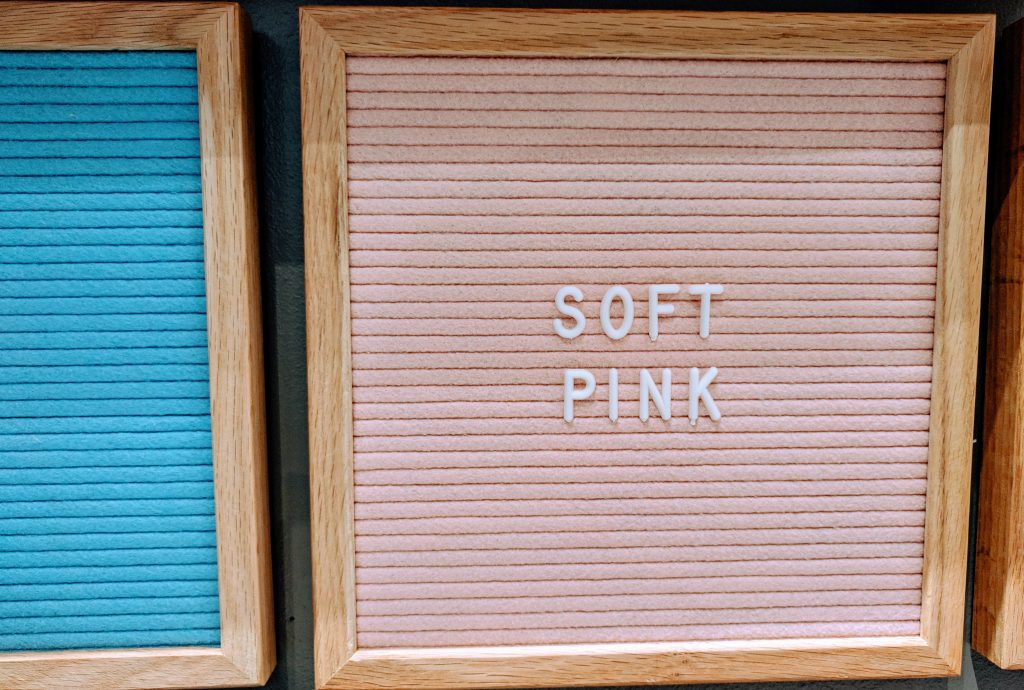
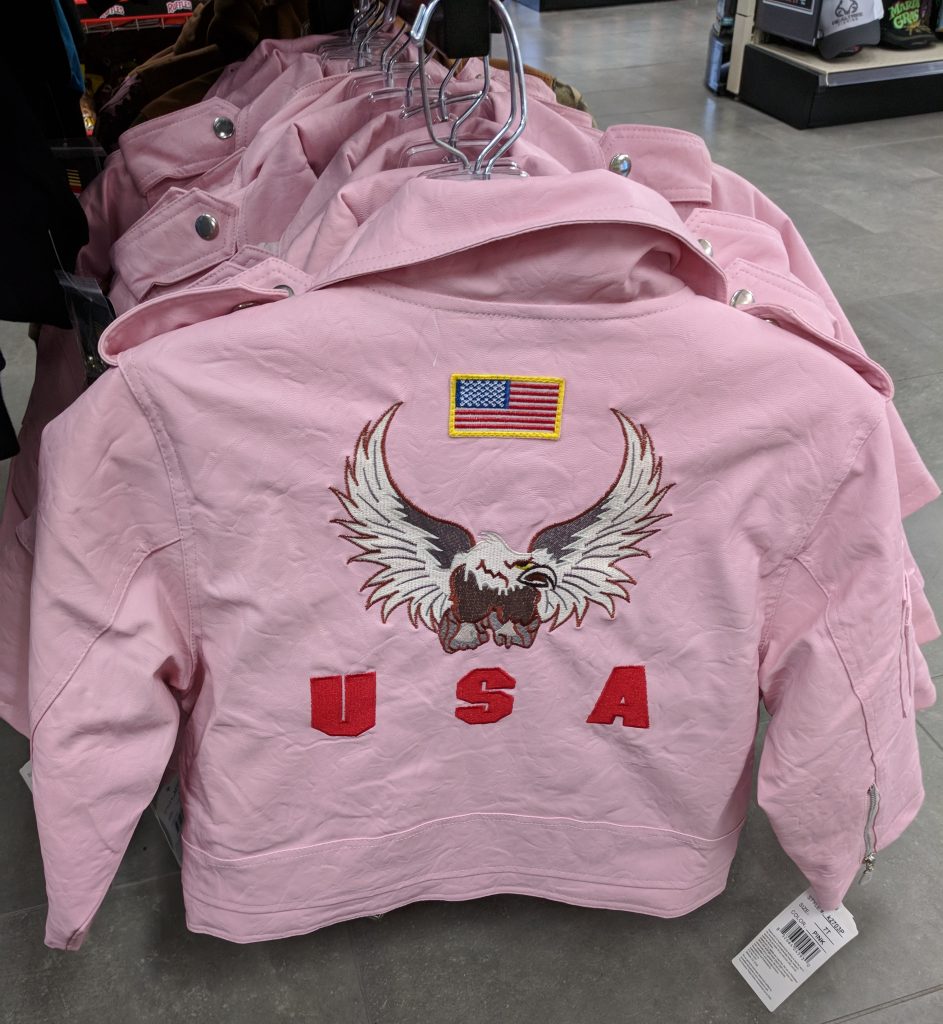
By my mid-college life I had veered away from pink’s statements, shamed by how the color has been weaponized to sell women shit and commodified to represent a whole community (i.e., who should like it and who shouldn’t). I was also cowed by the seeming conventionally of it (this, my own confused internalization of the weaponization of the color), and instead dabbled for a bit in punk rock black or wannabe-queer camo. Color and pattern are so tied to identity in that way.
Eventually, as I settled into myself, I came back around to pink, and I think it’s no coincidence that I fully embraced its powerful hold on me in my 30s, an age profound in its allowance to let me be myself. My true self. My awash in pink, sadly joyful selfhood.
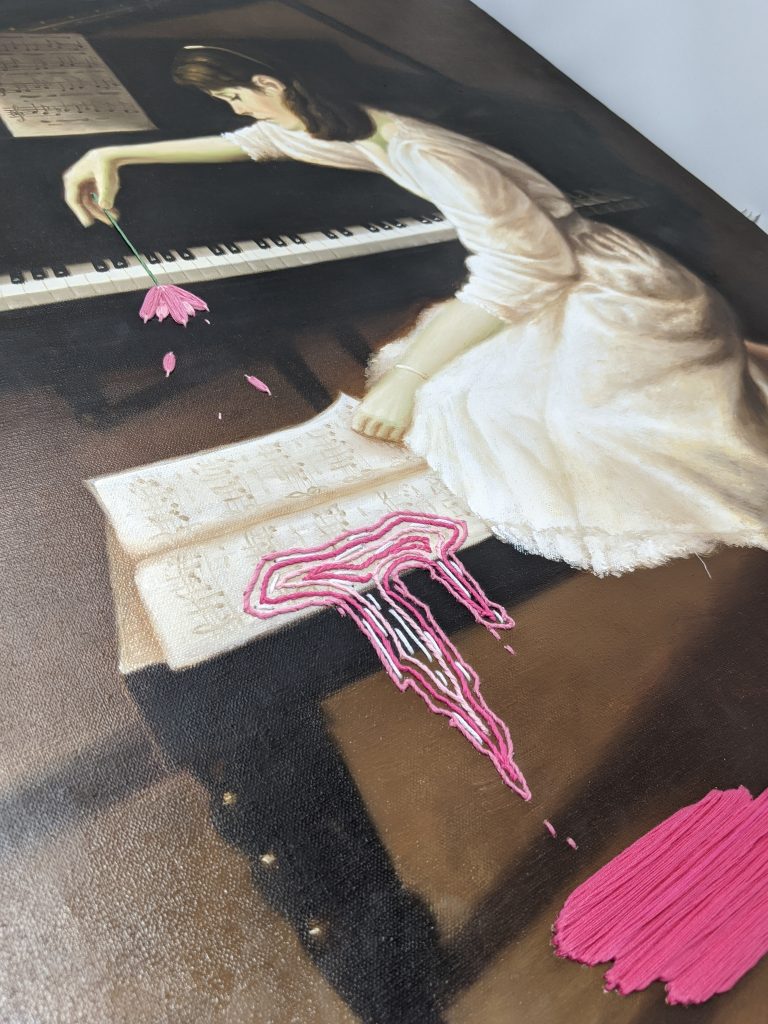
Pink is a symbol of my roots, my discontent, and my self actualization.
I love when men wear or like pink, but I am not too interested in using the color as an obvious gender statement in my artwork, though it probably can’t be unthreaded from that experience in a small capacity. No, I use it in my artwork as a reclamation of the color individually. Pink is powerful. I don’t find it feminine necessarily, but I myself am feminine and find power in being feminine—and power in accepting my femininity.
As an artistic element, pink makes anything and everything pop. Pink is a bold choice. It draws your eye and doesn’t let you go. I like that it’s still a bit divisive. It is the most stereotyped hue, as far as non-bodily pigment is concerned.
Pink draws attention to itself. Pink makes you look. Pink says, “I am not what you think I am… even though you are looking at me because you think you know precisely what you think I am.”

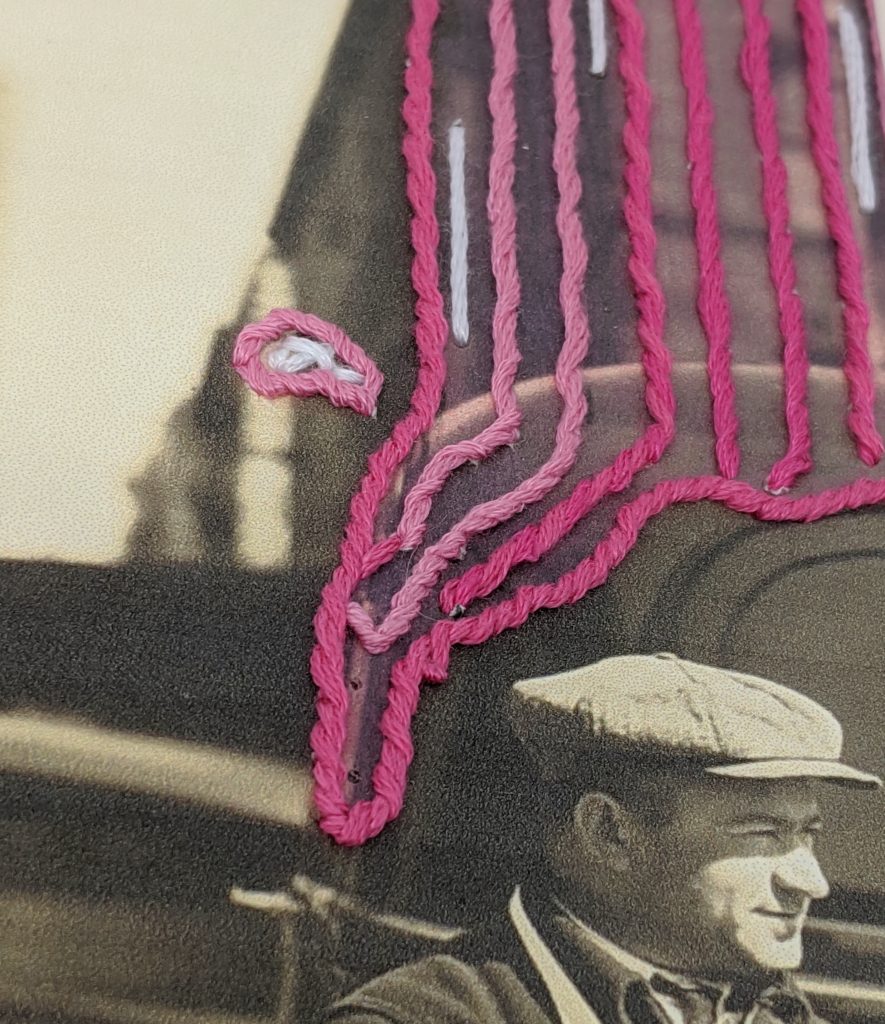
Pink in an artwork makes you confront something inside yourself.
That something could be big or small, upsetting or comforting. Doesn’t matter. The confrontation is what’s important. A confrontation is a question that makes you pause. It can be as small as a stitch, or as big as an elephant. A confrontation is a question that you’ll answer almost immediately with your intuition. That’s what I’m interested in. The naturalness, primality, invoked by such an unnatural color.
Pink is a loaded adjective as much as it is a color. It is something we culturally face everyday so we’re bound to have associations with it.
Pink cloud in sobriety refers to the typically short period of euphoria that some people feel soon after quitting their drug of choice.
Pink tax is the term for how women are nickel and dimed on toiletry products made for their gender.
Pink line(s), one or two depending on your situation, is what we look for on pregnancy tests as the minutes tick by.
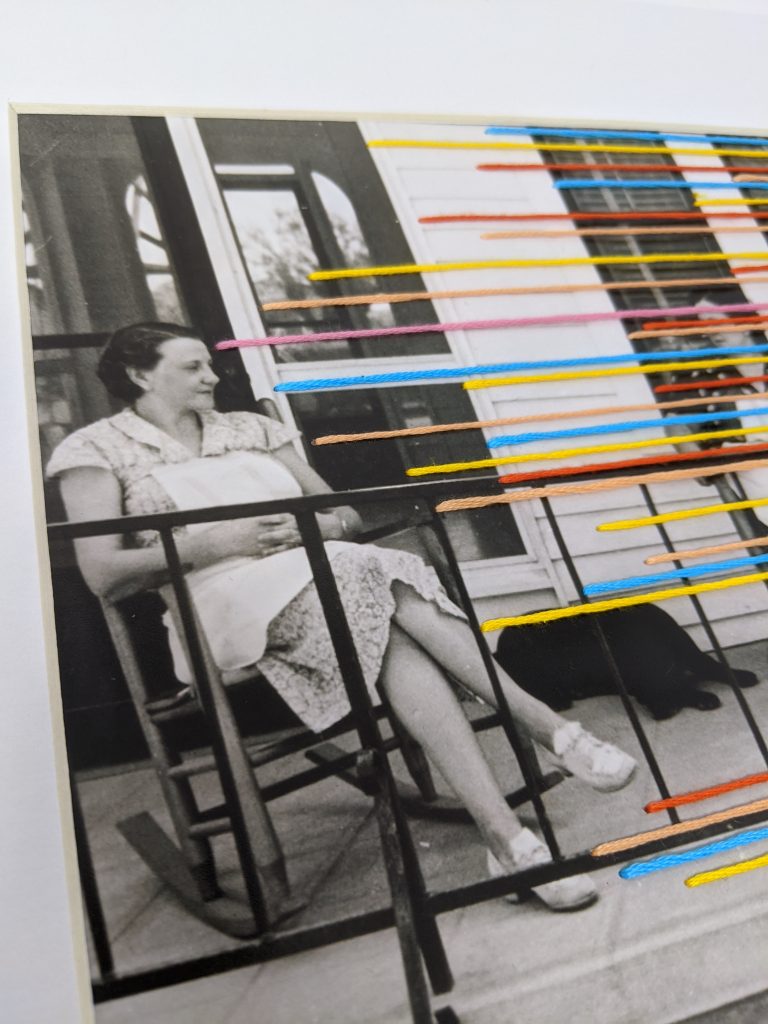
Can’t we just like something? Sure, but what we like has connotations, meanings, and layers. I don’t judge these. Just find it interesting. When we confront our connotations, meanings, and layers as individuals and as a whole, nonjudgmentally, we are closer to making change.
In the path from girlhood to adolescence to adulthood, the color identity shifts along with one’s self and understanding of their persona and place in the world.
Assumptions can be made. Let them.
What we like can change. Let it.
Who we are can change. Let’s.
The color though. The color never changes. And maybe that’s it. Maybe pink is some form of—some outlet for—controlling the narrative of my own life. Seeing my self, my life, my color for what it truly is: Whatever I make of it.
And I want to make it beautiful, fun. I want to make it pop.
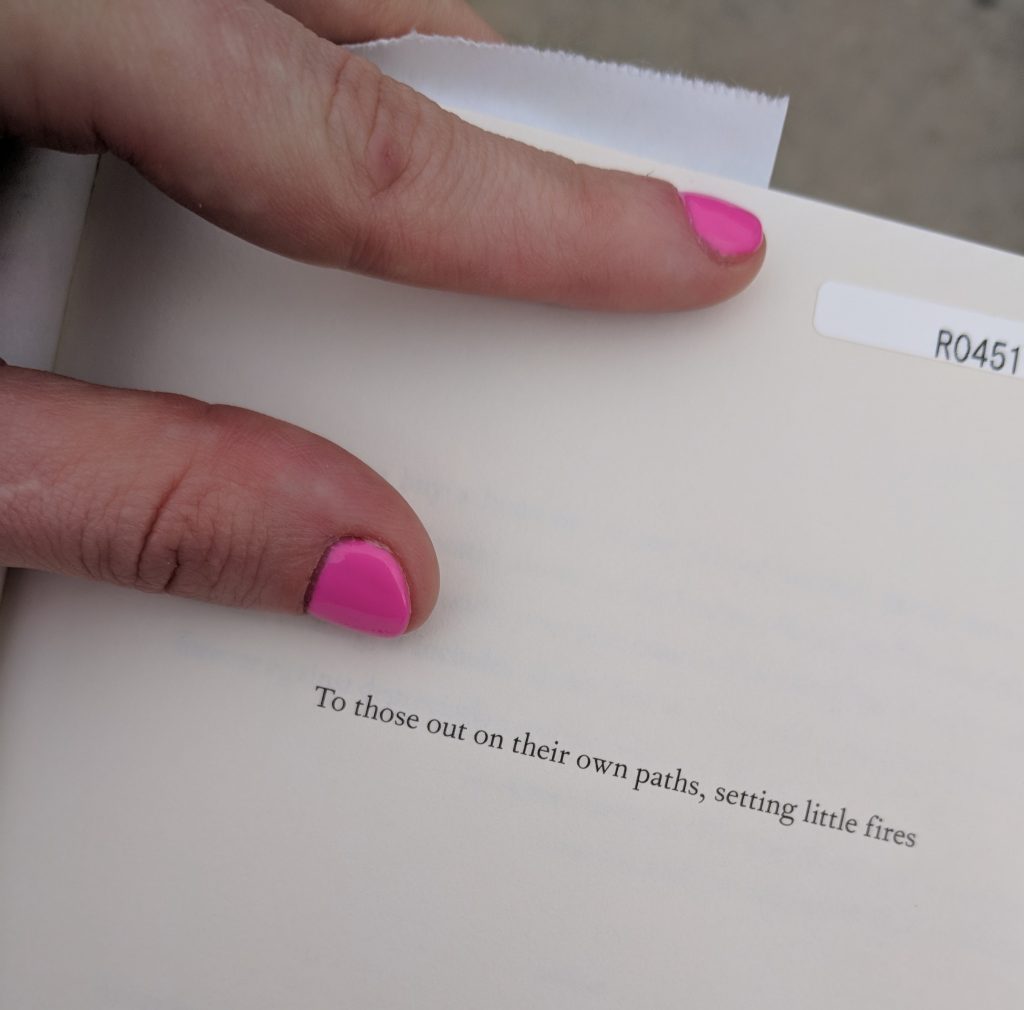
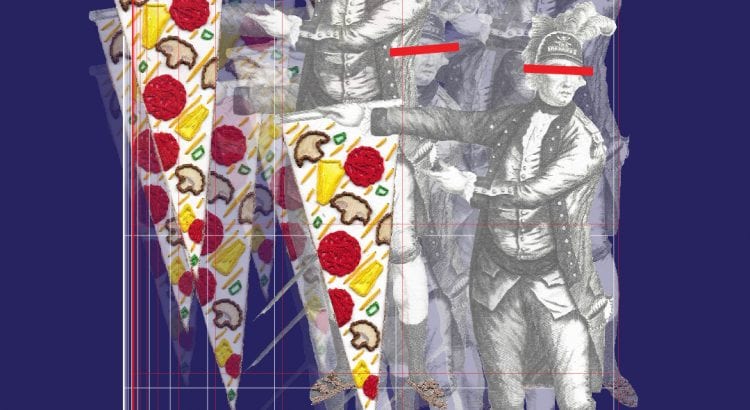
Check out these posters I made for the CCA@CCA Artwork Campaign in San Francisco!
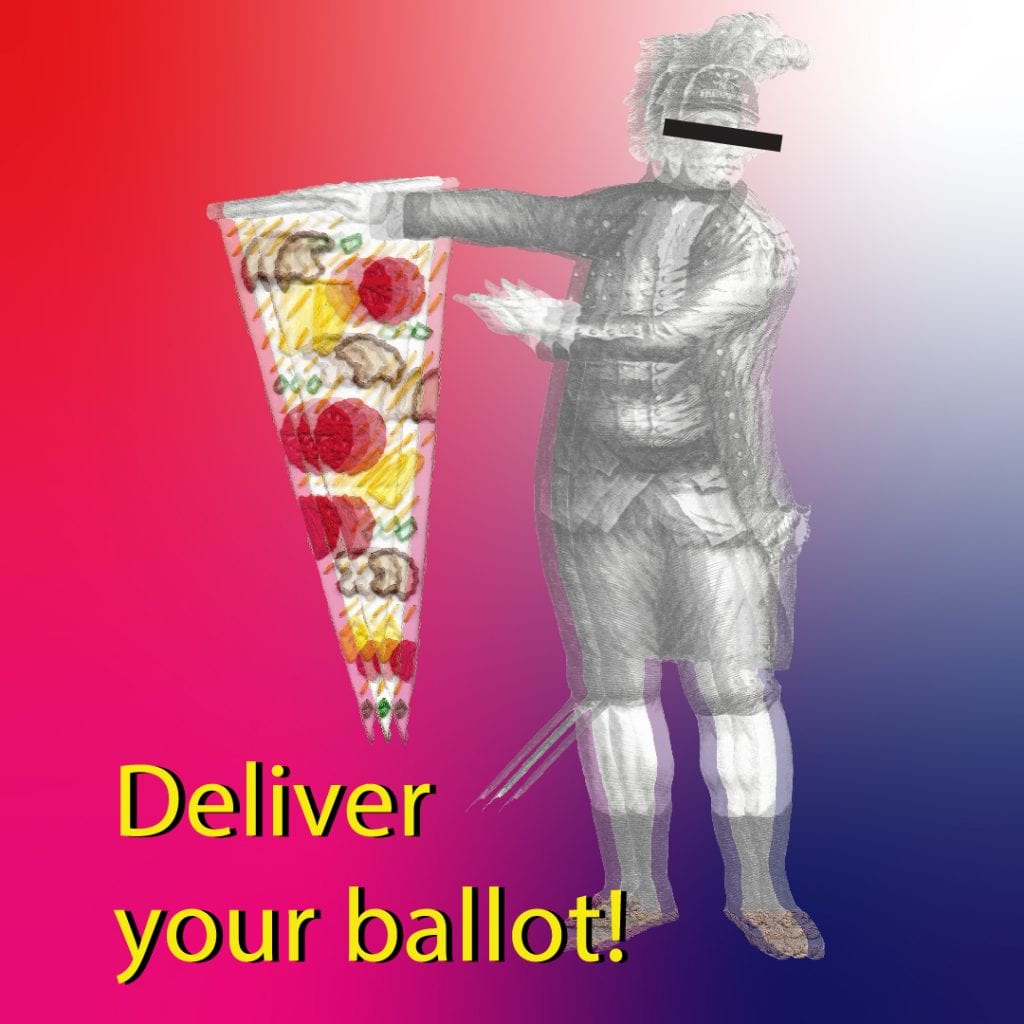
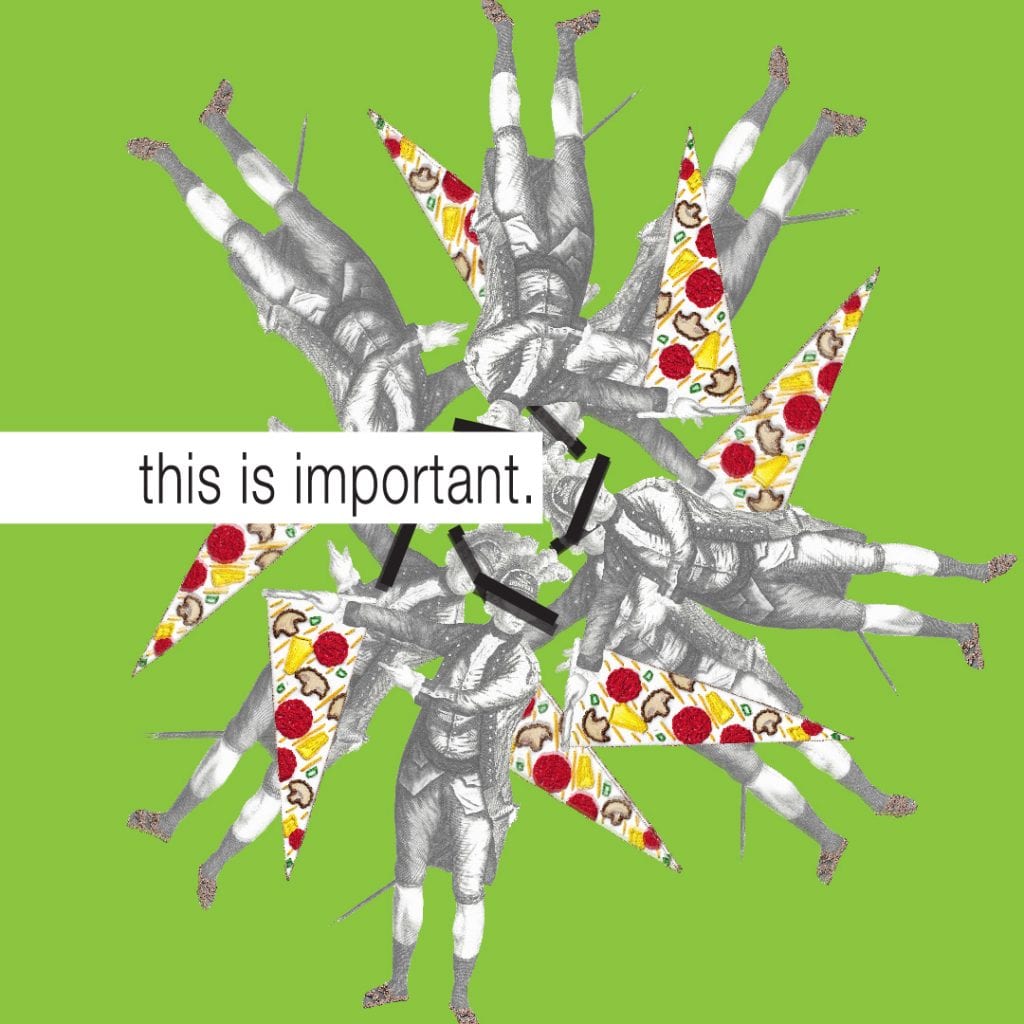
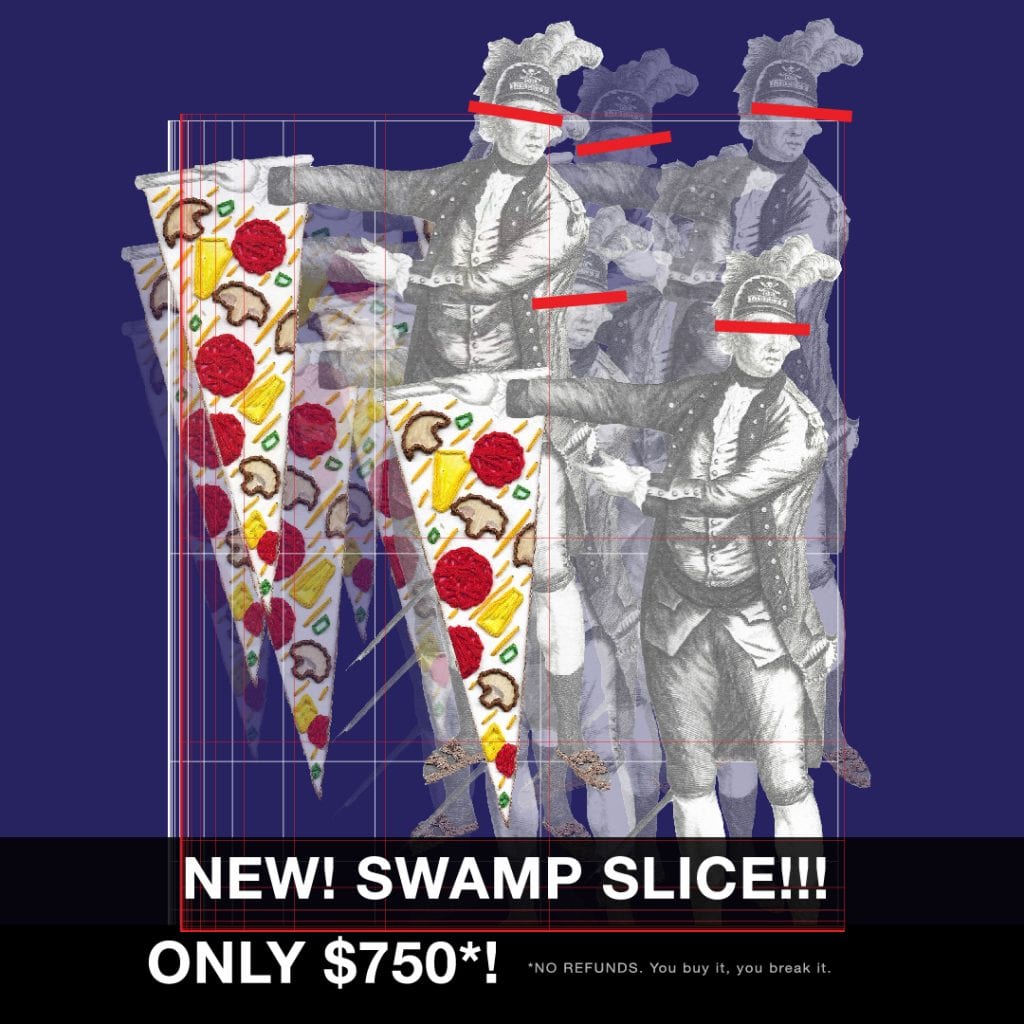
I’ve been learning how to cut out photos in Photoshop and decided to use a cutout of my embroidered pizza-party-boy patriot as a starting point. The exhibition prompt: “Express creative activism and promote democratic participation in the lead-up to Election Day and beyond.” ✌️🖕✊
All the artworks in the exhibition (on view online and in the windows of Hubbell Street Galleries at California College of the Arts) have been made into free, downloadable posters that you can print out and share to encourage others to get involved in their communities.
I took a playful angle with my entries, but there’s some really striking work up there, including a participatory Google maps photo project that pins found, littered masks—American Values by artist Amy Tavern.
Go to creativecitizens.cca.edu to see all the stellar work and download your favorites. Then go vote and/or eat pizza while you wash your face mask.
😷🗳️🍕🦅🕊️📮🇺🇲 #presidentsarelikepizzatoppings #youchoose
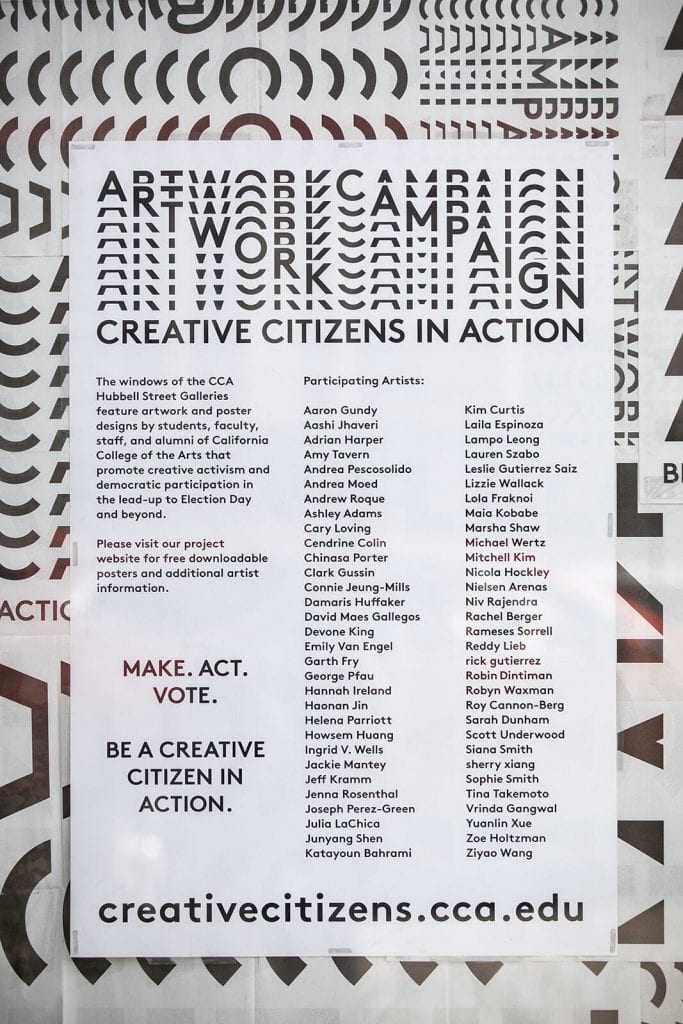
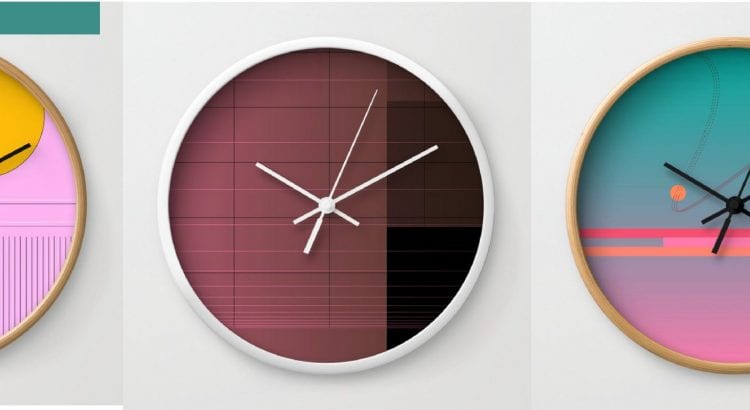
My wristwatch broke a few days ago, the hands frozen in a random high V. I’m inappropriately bummed about it! It took me a while to find a watch I liked, and this one—a mesh banded and metal mixed babe, silver and gold—goes with everything, looks classy af, and has basically become my sartorial security blanket.
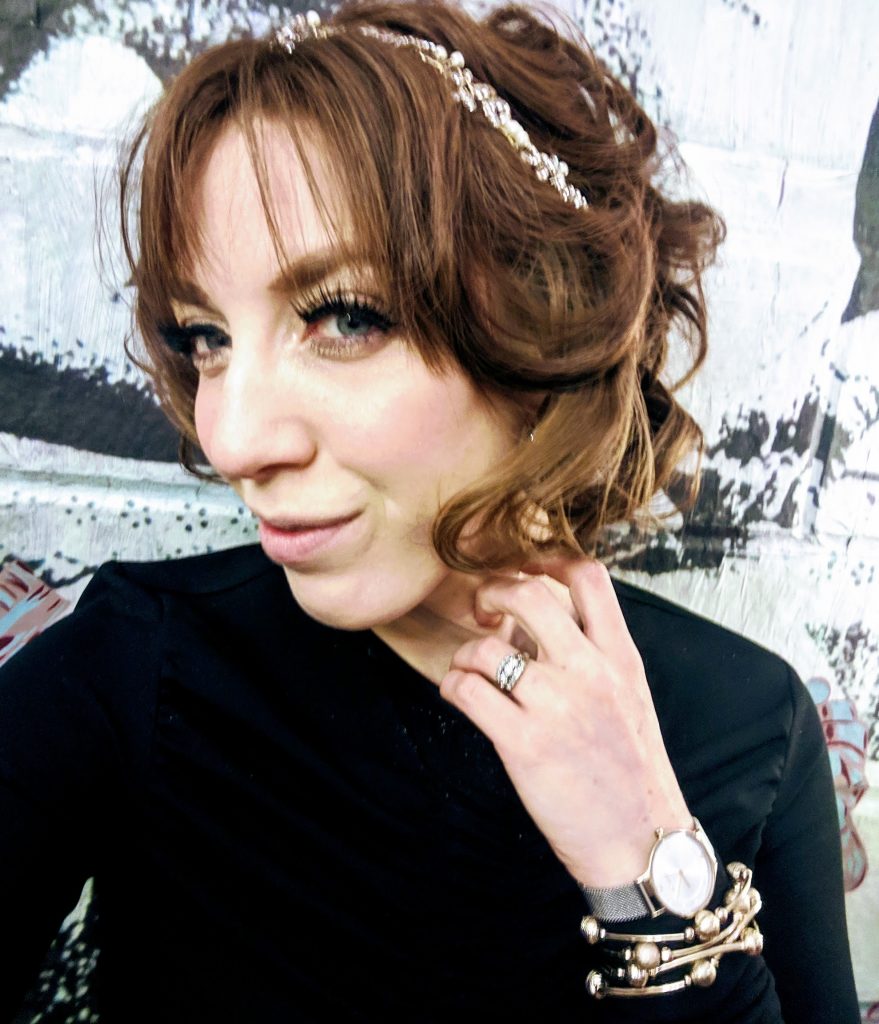
A 32nd birthday gift for myself, the watch has factored into my daily routine for the past two and a half years. I put it on each morning and take it off each night… like, well, clockwork. Now it is a phantom accessory. I keep catching myself staring at my naked left wrist after absentmindedly pulling it up to check the time.
I’ve decided to take the watch to a repair shop rather than simply buying a new one. The former has proven an infinitely more complicated choice than the latter. (But really not complicated at all, dear reader. I’m just comparing the work involved in finding, reviewing, and connecting with a reputable repair shop versus, you know, clicking around Macys.com for a few hours. Hours I can no longer track with my darling watch! <cue first-world wounded howl>)
Beyond the feeling of style and consistency a wristwatch offers me, I love my arm candy because it helps me pick up my phone less. And no need to light up my computer screen to check the time and risk dicking around online for 15 minutes before I come to and realize I’m late for a meeting. Just as a for example.
So now, as I find a place to fix my cheap but cherished timepiece and wait for her to be returned to me in tick-tock shape (ha), I’m considering a purchase of a wall clock to achieve a similar kind of stylish analog present-mindedness effect. Here are nine I’m choosing between from my macro.baby shop on Society6 as I hand off my Skagen to the nice clock man with the glass eye and await my beloved’s return.
Cool wall clocks
// by macro.baby on Society6
See in shop: 1 // 2 // 3 // 4 // 5 // 6 // 7 // 8 // 9
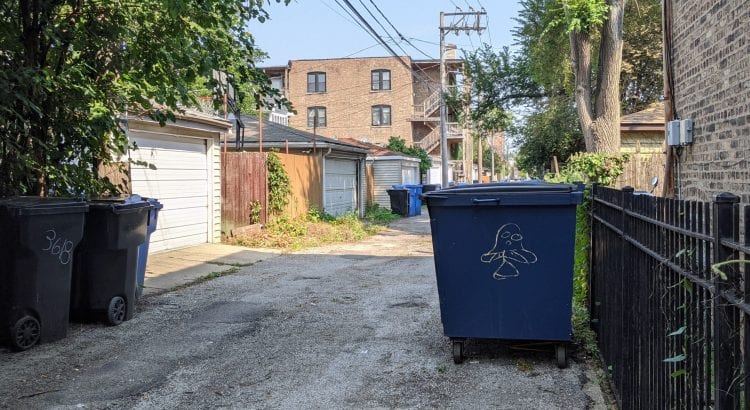
Are y’all still in lockdown mode? Justin and I are, and I’m confused about people who aren’t? Wtf is going on? Is the pandemic over? Hahahaskldjflaskjdfhahahaha aaaahhh!
When I’m not silently dread-screaming, trying to mentally prepare myself for a whole winter spent in our one-bedroom apartment, a time when we won’t even have a day at the park to quell our discontent (hahahaskldjflaskjdfhahahaha aaaahhh!), I’m focusing on my writing and visual art practices. Those, quite honestly, make me feel safe and in control.
I’ve spent the past six months building my own website/online shop for the embroidery art (launching October 10! aka 10/10 would recommend!). Building a website from the ground up has been surprisingly fun—surprising because I typically have very little tolerance for long term tasks of the technological variety, and fun because it has helped me understand my aesthetic and purpose a little more.
As I build the shop, I’ve had to think through many aspects of my visual practice, including theme, visual language, and intent. I always have a million ideas for a new collection or series, but having a shop to focus on versus, for example, the pursuit of a gallery show or getting into an art fair or residency or something (all on a pandemic pause), has put some valuable constraints around what I’m working on visually and the ideas I choose to pursue. It’s like bowling with bumper lanes on.
Here are three places I’ve been finding motivation as I work.
I bought a year-long pass to Creative Live, an online learning platform, so I could watch hours-long lectures on how to use Adobe Creative Suite. And, friends, best creative investment I’ve made in a long time. I got my money’s worth the first month in, slamming through hours of Illustrator courses. With the year-long Creator’s Pass I can access any course and its accompanying materials, so I’ve been learning the technicalities of painting, photography, photo editing, email marketing, and so much more. My favorite aspect of Creative Live is that the classes—since they don’t need to fit into a one-hour time slot—can get deep in the weeds, a comprehensive journey I currently have the time to take. 😉
Other virtual spaces I’ve gotten fewer but still great tips from are free virtual field trip events hosted by Creative Mornings. Upcoming lectures around topics range from the technical (ie., how to produce your own podcast) to the manifestational (ie., how to ohm your dream career into existence).
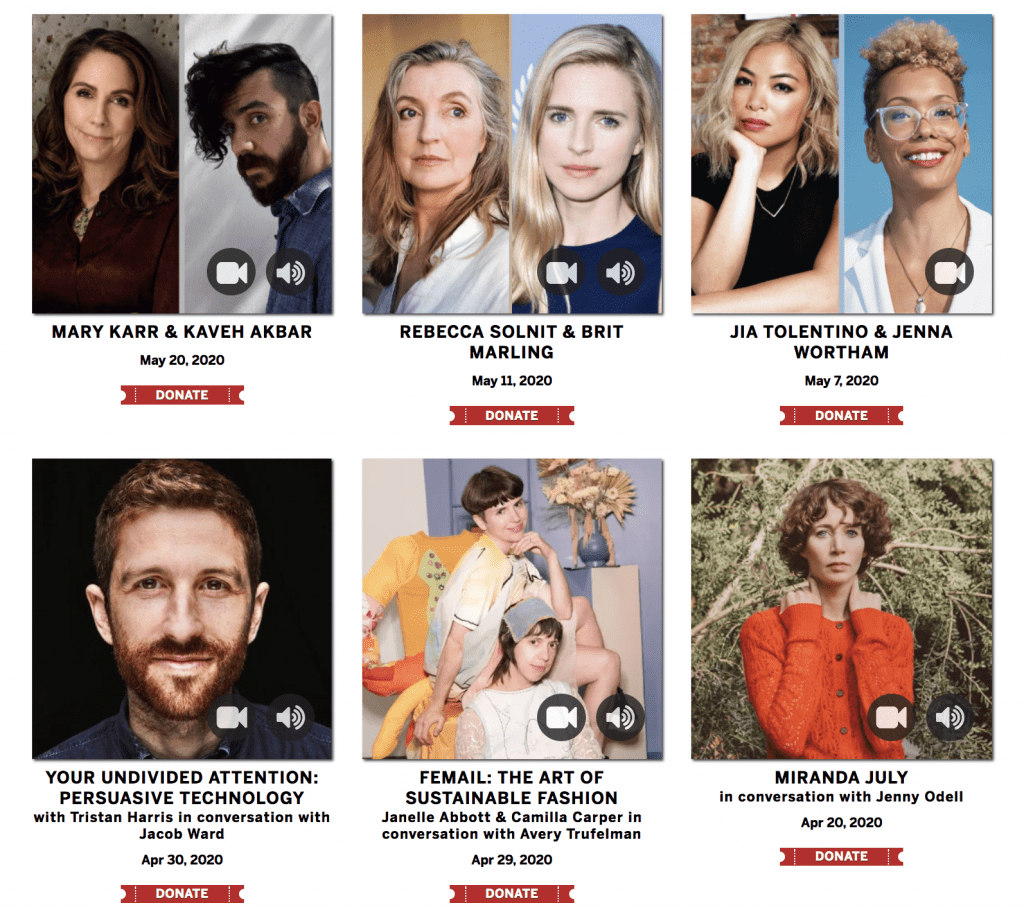
San Francisco-based City Arts & Lectures is a longstanding interview and events series held in the historic Sydney Goldstein Theater. In the spirit of Interview magazine, the format is supes-hot-artist-interviews-other-supes-hot-artist. Much to our non-Californians’ benefit, in the time of corona they’re streaming new discussions online for free.
What I’m listening to is in constant rotation because I am fickle, but recently I’ve been enjoying The Jealous Curator’s Art For Your Ears and a new Chicago output from Victoria Hines, Creative Journeys. Both pods feature interviews with working artists and makers about their process and approach.
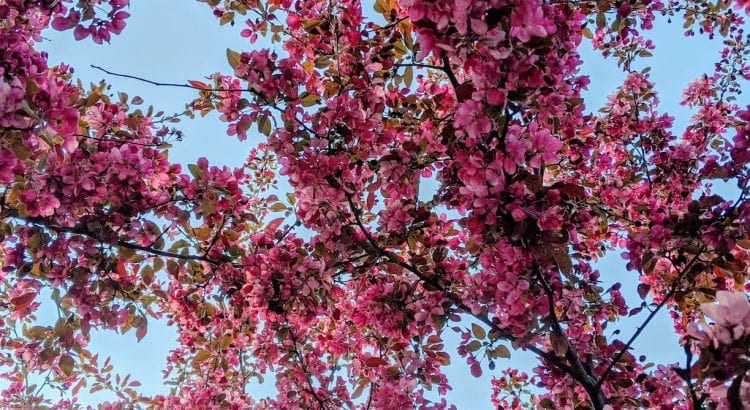
A bunch of poets I follow on Twitter liked this Tweet today, so it magically showed up on my timeline, and it’s perfect:
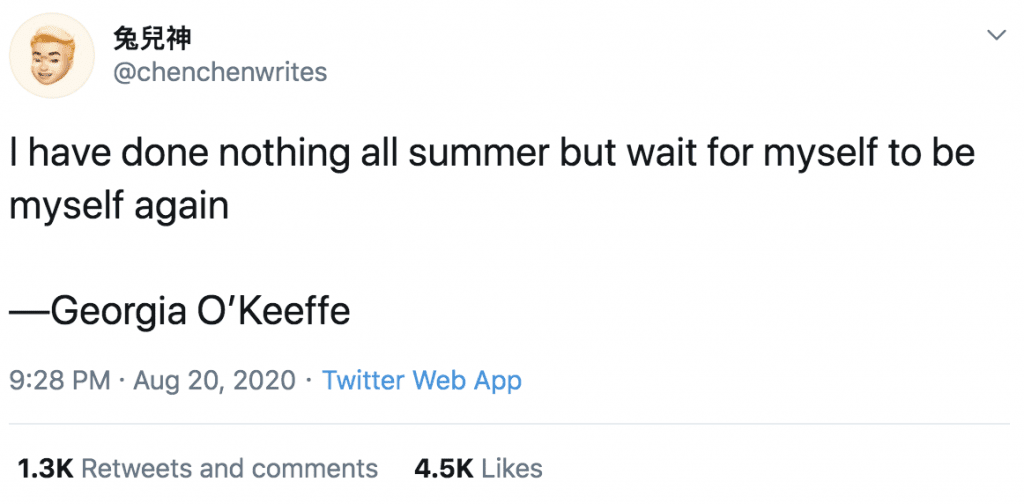
Georgia O’Keefe is famous for her flower paintings that look like, ahem, hoohas. That’s a reductionist distillation of her work, but it’s genpop-accurate because, whatever, we can only maintain so much info in our brains so it’s easier to identify her contributions to the art historical cannon by the most “memorable” thing about her work.
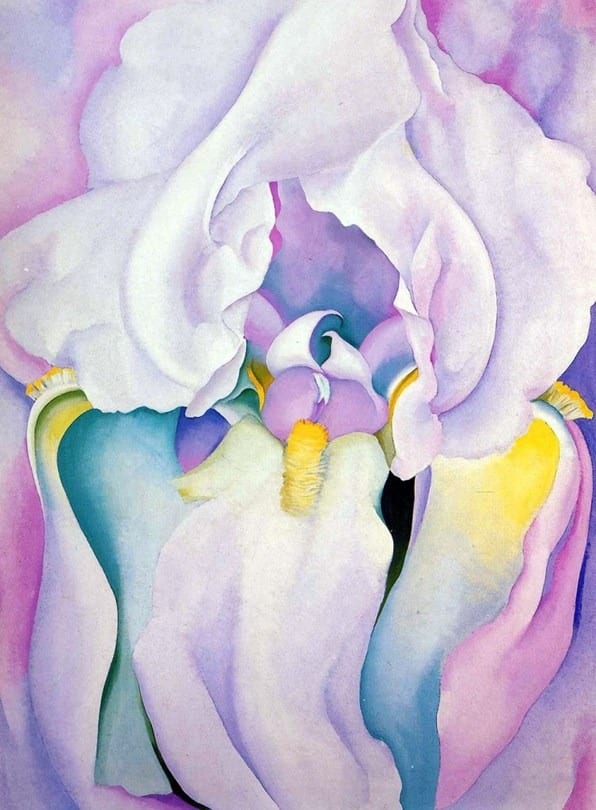
Perhaps, though, with the following passage of her own writing, we can see beyond Georgia’s ~flower vaginas~, and remember why she picked flowers as a focus of some of her paintings in the first place. Because they’re freaking beautiful.
Georgia decided to zoom into the blooms and paint a magnified perspective of flowers after being drawn to a tiny flower in a still life painting by Henri Fantin-Latour.
Here’s what she wrote:
“A flower is relatively small. Everyone has many associations with a flower—the idea of flowers. Still, in a way, nobody sees a flower, really, it is so small—we haven’t time—and to see takes time, like to have a friend takes time. So I said to myself—I’ll paint what I see—what the flower is to me but I’ll paint it big and they’ll be surprised into taking time to look at it. I will make even busy New Yorkers take time to see what I see of flowers.”
That the busy New Yorkers didn’t see flowers, necessarily, and instead mostly saw vaginas (or at least the art history did) is totally predictable and, like, what are we gonna to do? Georgia’s voluptuous flowers have caused celebration for the fornication-fueled folds of the most tender of lady parts, and so be it. Hell yeah. Let us toast the vaginas! Long live the labia! But also, as we cheer, may her idea of magnifying flowers as a means to share with the world what a pause to stop and look at the lilies can do for one’s, well, soul, hold meaning for us as well.
What can you take time to appreciate more closely this weekend? Might I suggest Ram’s Head with Hollyhock? Or your nearest adult, consenting vagina?